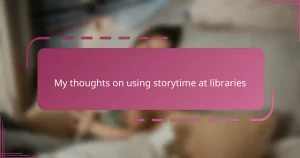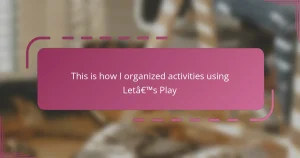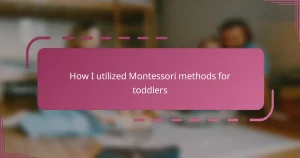Key takeaways
- Outdoor play enhances children’s physical health, creativity, and problem-solving skills, fostering a deeper connection with nature.
- The Nature Explore program provides structured yet flexible outdoor learning experiences, blending education with hands-on activities.
- Creating safe outdoor spaces and involving children in their own learning encourages exploration, resilience, and confidence.
- Overcoming challenges in outdoor play, such as weather and messiness, leads to adaptability and joyful learning experiences.
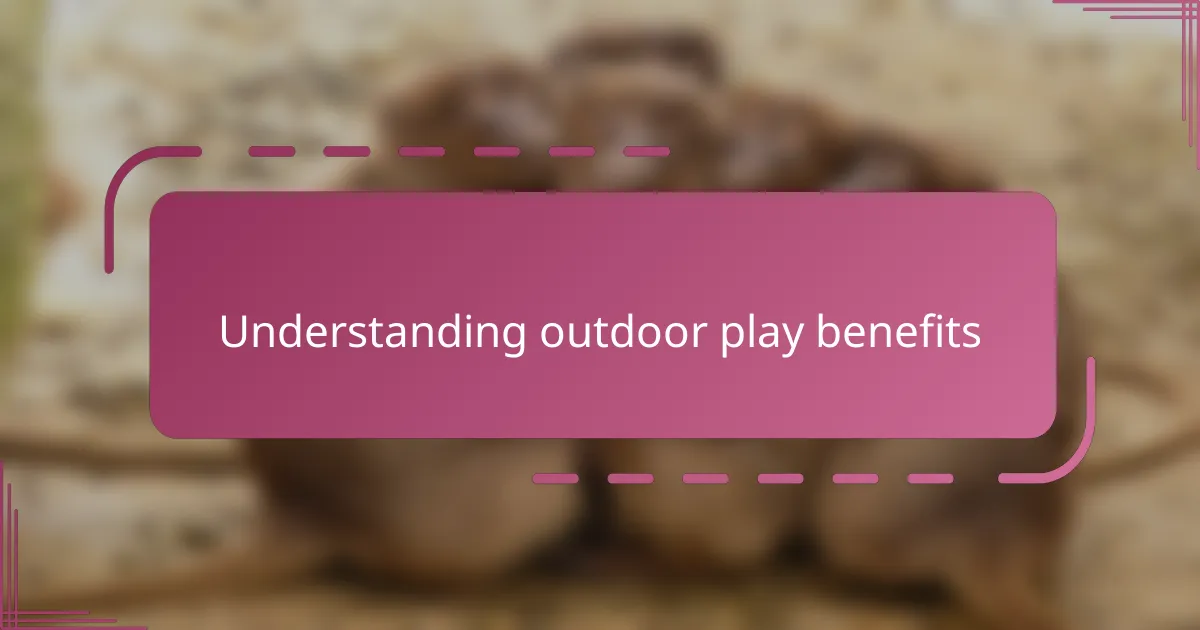
Understanding outdoor play benefits
When I first embraced outdoor play with my kids, I noticed how their mood shifted almost instantly—nature seemed to reset their energy and spark genuine curiosity. It made me wonder, why do we often underestimate the power of just being outside? Research shows that outdoor play enhances physical health, but emotionally, it nurtures calmness and creativity in ways screen time never could.
I remember afternoons spent exploring local parks, watching my children invent games with sticks and leaves, their imaginations running wild. That kind of play isn’t just fun; it builds problem-solving skills and resilience. Have you ever seen a child figure out how to cross a stream or build a makeshift shelter? Those moments are lessons wrapped in adventure.
The benefits go beyond the obvious exercise. Fresh air and natural surroundings reduce stress and improve focus, which I noticed especially during the school year. It’s like nature offers a gentle reset button for all of us—something I believe every parent should experience firsthand. Wouldn’t it be wonderful if outdoor play became a daily habit for your family, too?
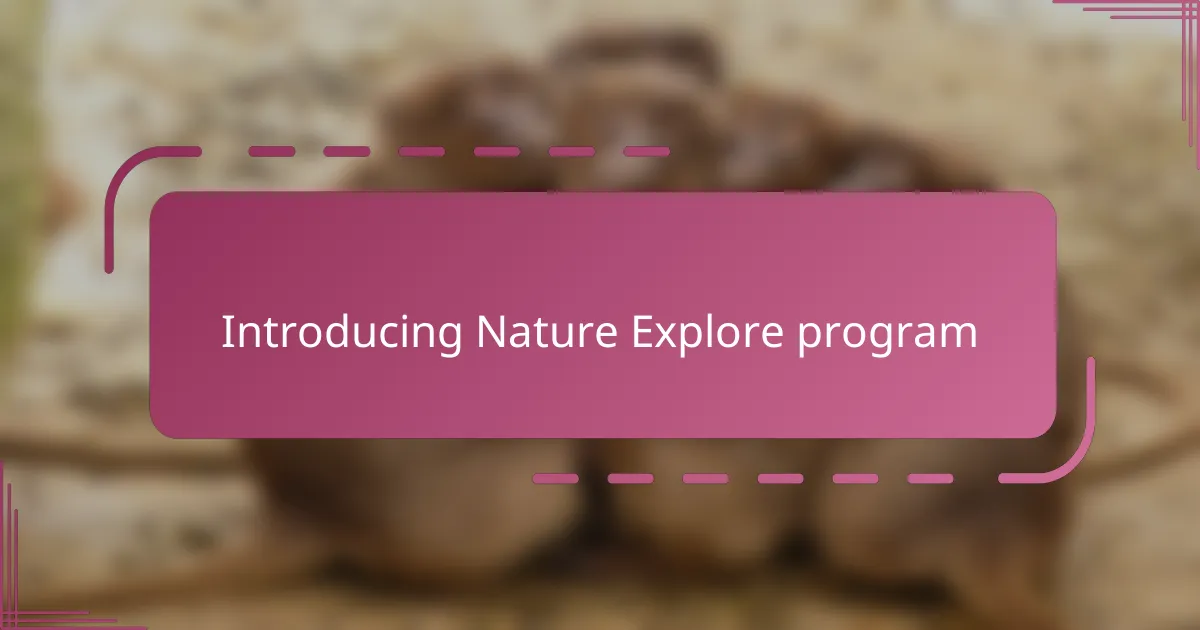
Introducing Nature Explore program
When I first discovered the Nature Explore program, it felt like finding a missing piece in my approach to outdoor play. This initiative is designed to connect children deeply with nature through thoughtfully created outdoor classrooms and activities. I was intrigued by how it encourages exploration in a structured yet flexible way, making nature play both meaningful and accessible.
What struck me most was how Nature Explore blends education with hands-on experiences, inviting kids to observe, create, and problem-solve naturally. Have you ever noticed how children light up when they build a simple bird feeder or dig in the soil? With this program, those moments are supported by a framework that fosters long-term growth and curiosity.
Implementing the Nature Explore program in our daily routine transformed not just playtime but also our perspective on learning. It’s not about just letting kids run wild; it’s about guiding them to notice the changing seasons, understand living things, and feel connected to their environment. That deeper bond has made outdoor play something I now cherish as much as my kids do.
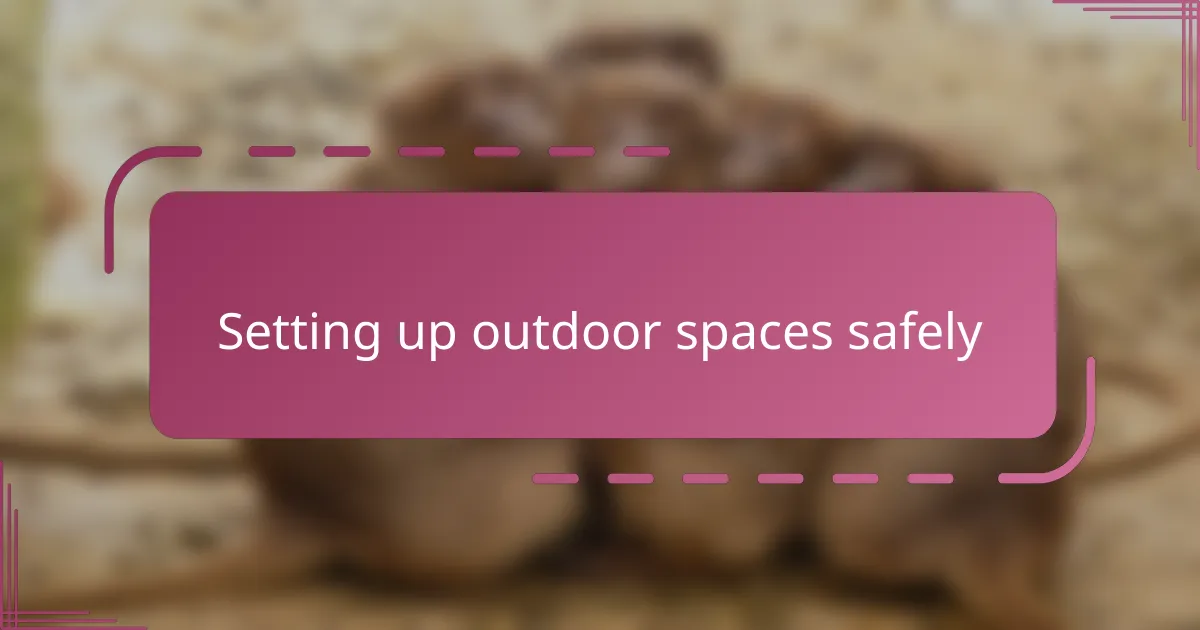
Setting up outdoor spaces safely
Creating a safe outdoor space took some careful thought—I wanted my kids to explore freely without constant worry. I made sure to clear away any sharp objects or trip hazards like uneven stones and low-hanging branches. It gave me peace of mind knowing they could roam while I stayed relaxed nearby.
I also added some natural barriers using logs and shrubs to gently define play areas, which helped my children understand their boundaries while still feeling connected to nature. Have you ever noticed how kids feel more confident playing when they have clear, safe spaces to move around? It was a simple change, but it made a big difference in how freely they played.
Another key step was checking for any toxic plants or allergens—something I didn’t think about at first but quickly learned to prioritize. I even involved my kids in learning which plants were safe to touch and which to avoid. That little lesson became part of the adventure, turning safety checks into a fun, interactive moment rather than a chore.
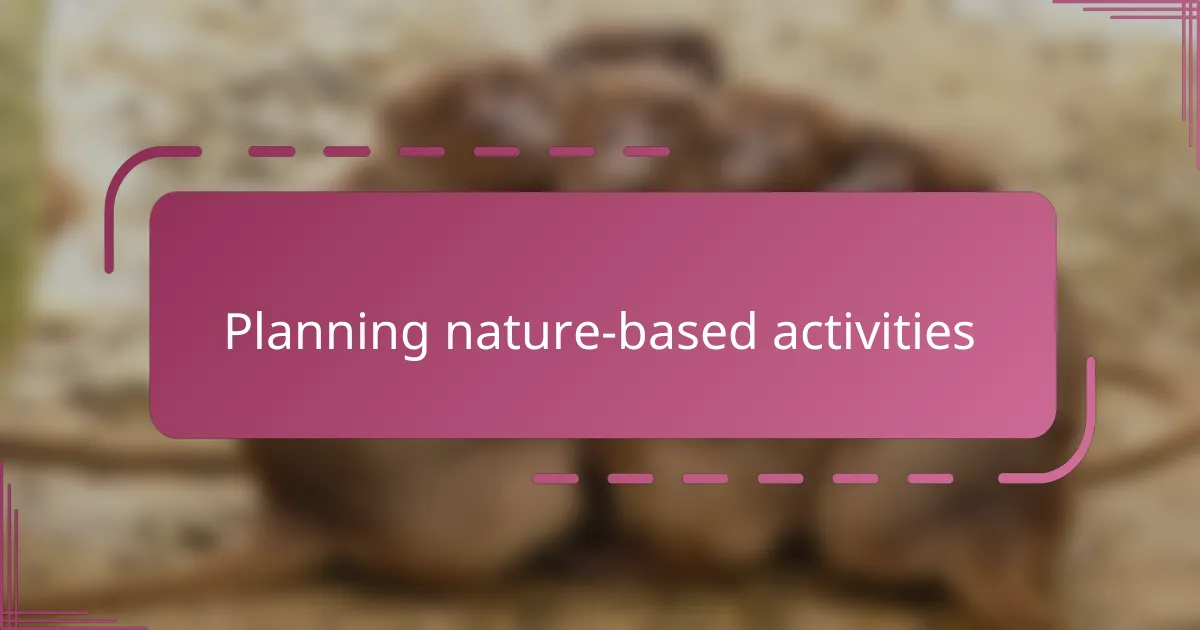
Planning nature-based activities
When I started planning nature-based activities for my kids, I realized how important it was to tailor experiences to their interests and the local environment. Instead of just tossing them outdoors, I took time to think about what natural elements we had around—trees, rocks, streams—and how we could interact with them in playful ways. Have you ever noticed how kids light up when they find a hidden bug or a unique leaf? Those small discoveries became the backbone of our plans.
One thing I learned quickly is the value of balancing structure with freedom. I’d set simple goals like “let’s build a fort from fallen branches” or “collect different-shaped leaves,” but then step back and watch their creativity take over. This way, activities felt purposeful but still allowed plenty of room for imagination. How often do we give kids that kind of open-ended invitation when we plan playtime?
I also found it helpful to prepare a few materials in advance—like magnifying glasses, buckets, or sketchbooks—to encourage curiosity and sustained engagement. Having these tools on hand turned everyday nature walks into mini explorations filled with questions and discoveries. Thinking back, those little preparations made all the difference between a casual stroll and a truly memorable outdoor adventure.
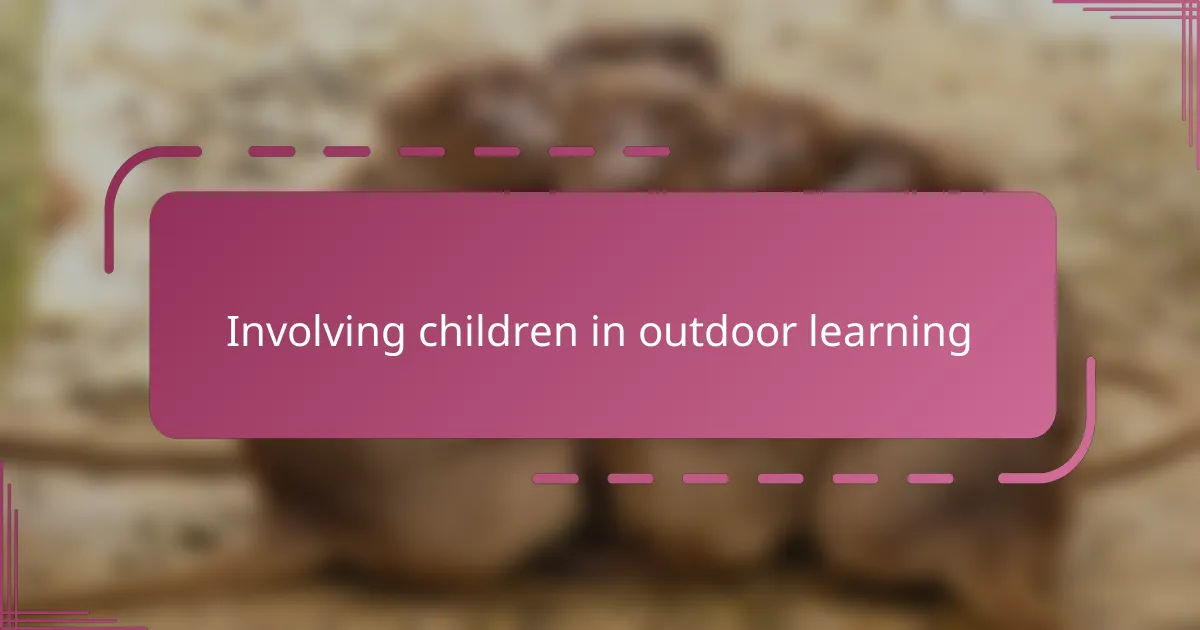
Involving children in outdoor learning
Getting children involved in outdoor learning felt like opening a new world to them—and honestly, to me as well. I remember how my youngest’s eyes widened the first time we examined a ladybug up close, using one of our borrowed magnifying glasses. That moment of pure wonder reminded me why hands-on outdoor learning matters; it’s about sparking curiosity in ways that walls and screens just can’t.
I found that letting kids take the lead during these outdoor sessions changed everything. When I asked my daughter what she wanted to explore, she eagerly chose the mud puddle after the rain—something I might have dismissed before. But watching her experiment with water and soil taught me that true learning often happens when children direct their own discoveries. Doesn’t it make you wonder how many lessons we miss when we’re too focused on guiding every step?
Also, involving children meant letting go of some control, which wasn’t always easy. I had to remind myself that a little dirt, a few scratches, or a moment of uncertainty are all part of their growth. Outdoor learning invites kids to engage with nature on their terms, encouraging resilience and problem-solving that I see carry over into so many parts of their lives. Have you noticed how a child who has struggled with a challenge outside often faces other challenges with more confidence? I certainly have.
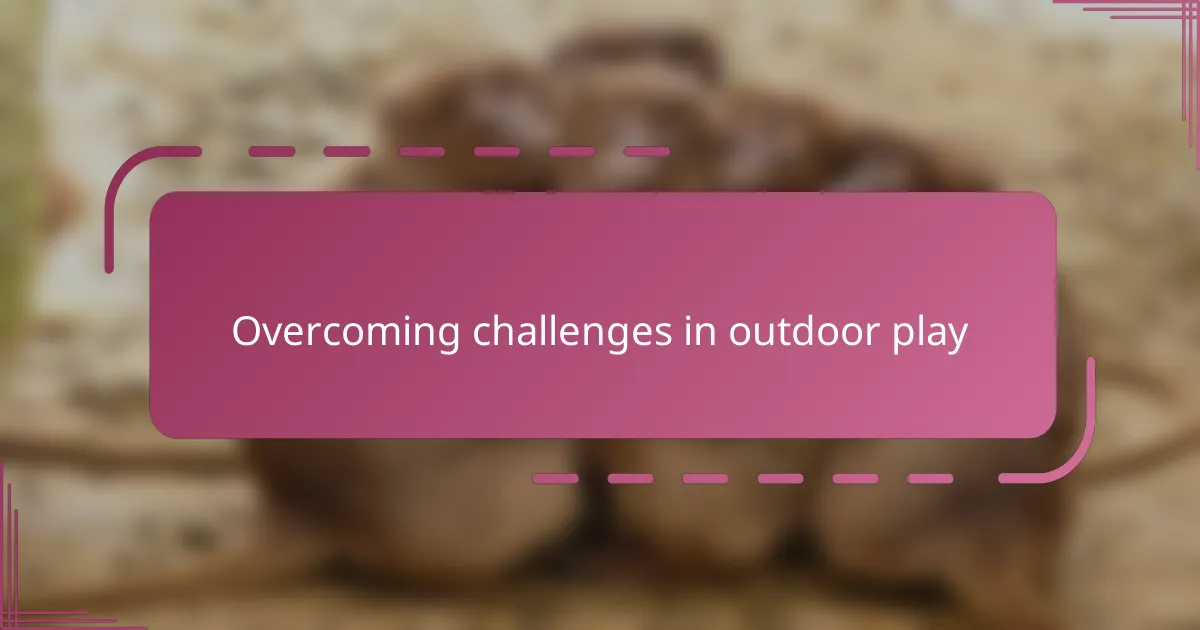
Overcoming challenges in outdoor play
Sometimes, getting started with outdoor play can feel overwhelming—weather changes, muddy clothes, or even the occasional bug bite might discourage both kids and parents. Early on, I struggled with these little hurdles, wondering if the mess and unpredictability were worth it. But then I realized that embracing these imperfections is part of the adventure; after all, how else will children learn to adapt and develop resilience?
I also found that planning ahead helped me manage common challenges, like short attention spans or fading enthusiasm. For instance, when my kids seemed restless, introducing simple prompts like “Let’s see if we can spot different bird calls” helped redirect their focus without turning playtime into a strict agenda. Have you tried turning potential frustrations into opportunities for creativity? That shift made a surprising difference in our outdoor experiences.
Another obstacle I faced was balancing safety with freedom. It’s natural to worry—what if they wander off or get hurt? But through trial and error, I learned to set clear, gentle boundaries while encouraging exploration. Establishing these unspoken rules gave my children confidence to roam, knowing I was nearby but not hovering. How often do we underestimate children’s ability to navigate nature when given trust and guidance? I certainly had to rethink my approach.
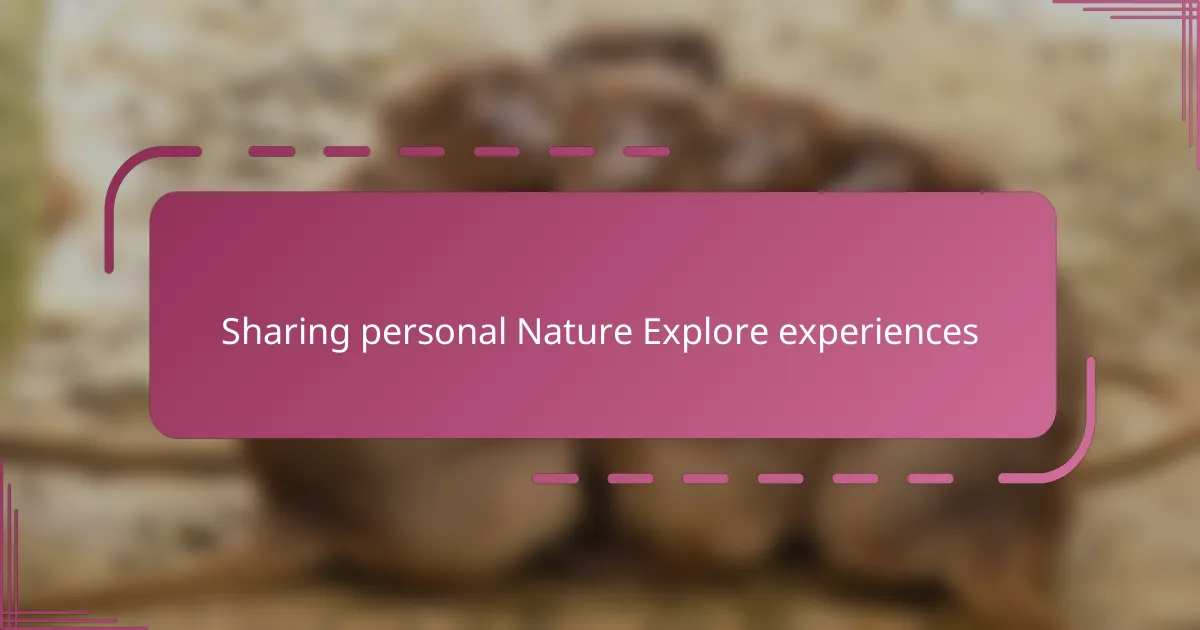
Sharing personal Nature Explore experiences
One of my most cherished memories with the Nature Explore program was watching my youngest create a miniature garden from found leaves and stones. Seeing her carefully arrange each piece with such focus reminded me how deeply kids connect to nature when given the right tools and space. Have you ever witnessed that quiet concentration blossom into proud accomplishment? It’s moments like these that make all the effort feel worthwhile.
I also recall a day when a sudden rain shower turned our outdoor play into an unforgettable muddy adventure. Instead of rushing inside, we embraced the mess, jumping in puddles and examining raindrops on petals. That unexpected change showed me how flexible and joyful nature exploration can be—sometimes the best experiences arise from letting go of plans. Doesn’t that make you rethink what “play” really means?
Reflecting on these experiences, I realize how much sharing them with friends and family has enriched our journey. When I talk about the bugs we’ve found or the birds we spotted, others get inspired to try Nature Explore themselves. Have you noticed how stories about real experiences encourage others more than just facts or advice? That personal connection fuels a community of outdoor learners in the most natural way.
